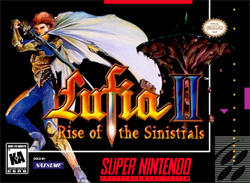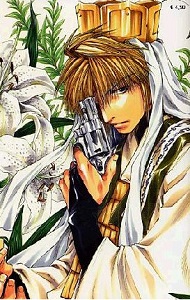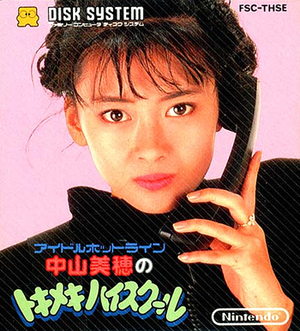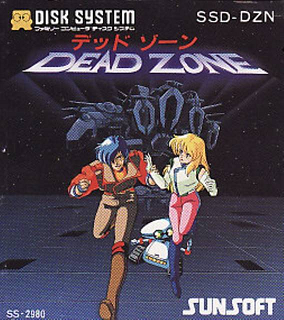
Saiyuki is a Japanese manga series written and illustrated by Kazuya Minekura. It was originally serialized in Square Enix's Shōnen magazine Monthly GFantasy between February 1997 and November 2001, with its chapters collected in nine tankōbon volumes; later republished by Ichijinsha, released the nine volumes with new covers from October 2002 to June 2003; and a five-volume bunkoban edition which was released from April to August 2015. The story, which is loosely based on the 16th-century Chinese novel Journey to the West, follows a monk named Genjo Sanzo who receives a mission to travel to the west with a group of three yokai (demons) to stop anyone reviving the evil god Gyumao.

Kirby's Dream Land is a 1992 action-platform game developed by HAL Laboratory and published by Nintendo for the Game Boy. It is the first game in the Kirby series and marks the debut of Kirby. It introduced many conventions that would appear in later games in the series. The game follows Kirby as he goes through five levels to retrieve the Sparkling Stars and food of Dream Land from King Dedede.

Lufia II: Rise of the Sinistrals, known as Estpolis Denki II in Japan, and as Lufia in Europe and Australia, is a role-playing video game with puzzle elements developed by Neverland and published in Japan in 1995 by Taito, and in North America and Europe in 1996 by Natsume and Nintendo respectively, for the Super Nintendo Entertainment System. It is the second game in the Lufia series.

Multi-memory controllers or memory management controllers (MMC) are different kinds of special chips designed by various video game developers for use in Nintendo Entertainment System (NES) cartridges. These chips extend the capabilities of the original console and make it possible to create NES games with features the original console cannot offer alone. The basic NES hardware supports only 40KB of ROM total, up to 32KB PRG and 8KB CHR, thus only a single tile and sprite table are possible. This limit was rapidly reached within the Famicom's first two years on the market and game developers began requesting a way to expand the console's capabilities.

Kirby's Dream Land 3 is a 1997 action-platform game developed by HAL Laboratory and published by Nintendo for the Super Nintendo Entertainment System. Starring Kirby, it is the fifth installment in the Kirby series and the third game under the Kirby's Dream Land name. Although the first game was largely unrelated, Dream Land 3 features many similar characters to Dream Land 2. Dream Land 3 was followed by Kirby 64: The Crystal Shards in 2000.

Bio Miracle Bokutte Upa is a Konami video game that was first released for a Japan-exclusive market in 1988 for the Family Computer Disk System. It was later released as a cartridge in 1993 for the Family Computer itself.

NES Open Tournament Golf, known in Japan as Mario Open Golf, is a sports video game developed and published by Nintendo for the Nintendo Entertainment System. NES Open Tournament Golf is the second Nintendo-published golf-based video game released for the NES, the first game being Golf. In addition to the Famicom version of Golf, there were two other Nintendo-published golf-based video games released in Japan. These games were released in disk format on the Family Computer Disk System in 1987. These two games were Family Computer Golf: Japan Course and Family Computer Golf: U.S. Course.

Monkey Typhoon, known in Japan as Assobot Robot Goku, is a Japanese mixed-media project created by Avex Inc., consisting of a manga series and an anime television series. The project was first announced in June 2000, under the tentative title Son Gokū no Bōken, with collaboration of writer Yoshimi Ishikawa. The series is loosely based on the 16th century novel Journey to the West.

Genjo Sanzo or Genjyo Sanzo is a fictional character in the manga and anime series Saiyuki. He is one of the four protagonists, loosely based on the character Tang Sanzang.

Shin Onigashima is a 1987 adventure game developed by Nintendo R&D4 and Pax Softnica. It was released by Nintendo on two disk cards for the Famicom Disk System. Shin Onigashima was produced by Shigeru Miyamoto with music by Koji Kondo. The game is the first in the Famicom Mukashibanashi series and was followed by Yūyūki (1989).

Shin Megami Tensei: Devil Children, also known as DemiKids, is a series of role-playing video games primarily developed by Multimedia Intelligence Transfer and published by Atlus. It is a spin-off from Atlus' Megami Tensei franchise, and began in 2000 with the Game Boy Color games Black Book and Red Book. Five more role-playing games and three games in other genres were released until 2004, followed by no new releases until the 2011 social game Shin Megami Tensei: Devil Children. In addition to the games, the series has been adapted into manga, anime, and a trading card game, and two soundtrack albums have been released by First Smile Entertainment.

Time Twist: Rekishi no Katasumi de... is a text-based adventure game developed by Pax Softnica under Nintendo EAD and published by Nintendo for the Family Computer Disk System in 1991. The game was released only in Japan.

Nakayama Miho no Tokimeki High School is a 1987 dating sim developed by Square and Nintendo R&D1, and published by Nintendo exclusively in Japan for the Famicom Disk System. The game was released on December 1, 1987. It was one of the first dating sim games. It was designed by Hironobu Sakaguchi, who also created the Final Fantasy series, and Yoshio Sakamoto, who co-created Metroid. The music for the game was composed by Nobuo Uematsu and Toshiaki Imai. Pop idol Miho Nakayama contributed her name and likeness and voice-acted tie-in segments that could be accessed by calling toll-free phone numbers revealed during the progress of gameplay.
Jake Hunter, known in Japan as Tantei Jingūji Saburō, is a mystery adventure game series originally developed and published by Data East in 1987. The property would transfer to WorkJam after its seventh instalment, and later to Arc System Works.

Dead Zone is a text-based adventure video game developed and published by Sunsoft for the Famicom Disk System in Japan on November 20, 1986.

Famicom Detective Club is an adventure game duology developed and published by Nintendo for the Family Computer Disk System. The first entry, The Missing Heir, was released in 1988, followed by a prequel released the next year titled The Girl Who Stands Behind. In both games, the player takes on the role of a young man solving murder mysteries in the Japanese countryside.

Gensomaden Saiyuki is a Japanese anime television series that is based on Kazuya Minekura's manga series Saiyuki. The show is set in Shangri-La, an earthy paradise where humans and youkai (demons) live peacefully together. The world is invaded by "Minus Waves", which are created by the mixing of scientific research and magic in an attempt to resurrect an ancient, powerful and evil god named Gyumao. The youkais return to their bestial habits, killing and eating humans. Goddess Kanzeon sends the Buddhist monk Genjo Sanzo and his acolytes Son Goku, Sha Gojyo, and Cho Hakkai to Tenjiku (India) to stop the curse and prevent Gyumao's resurrection.

















